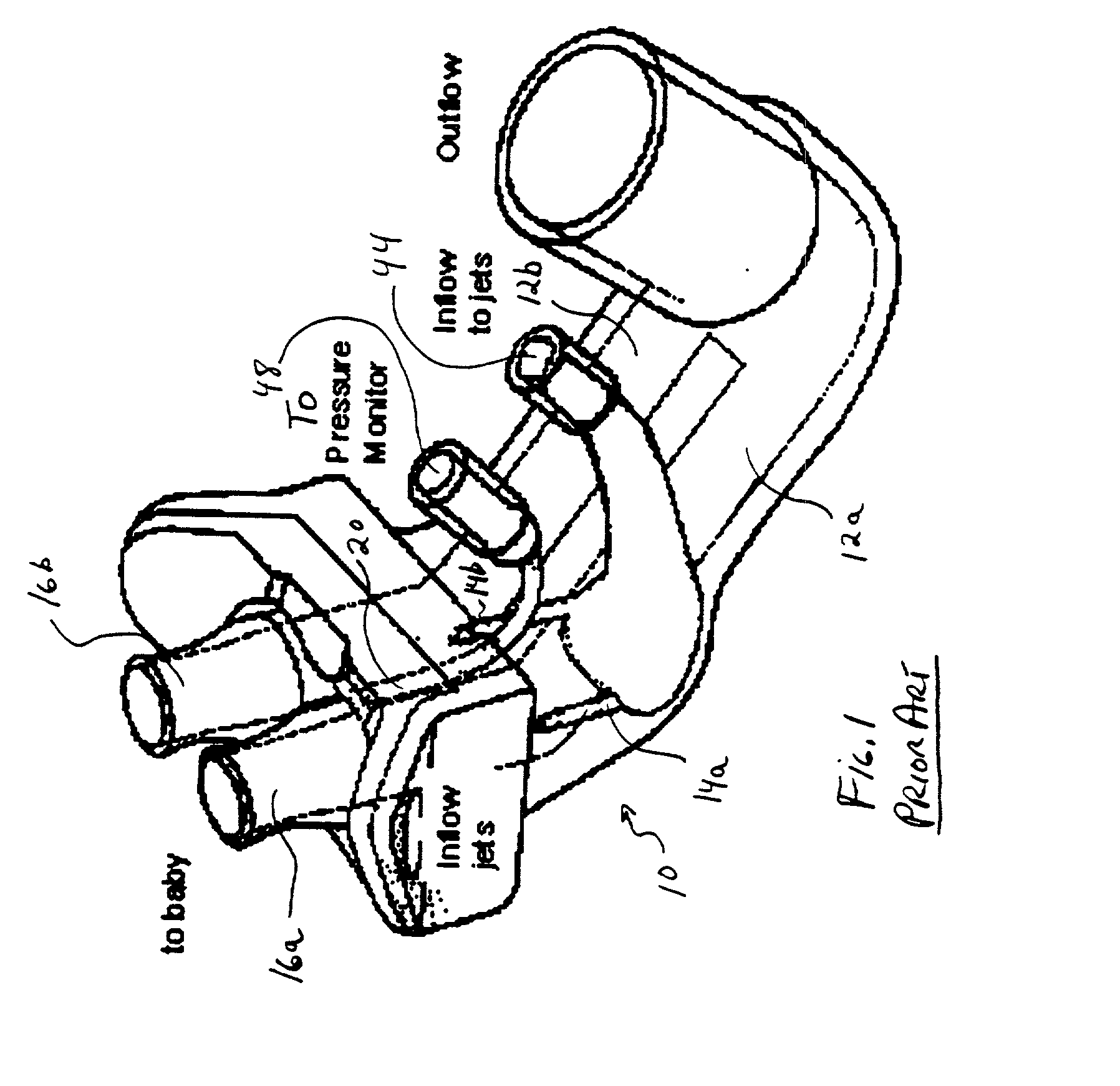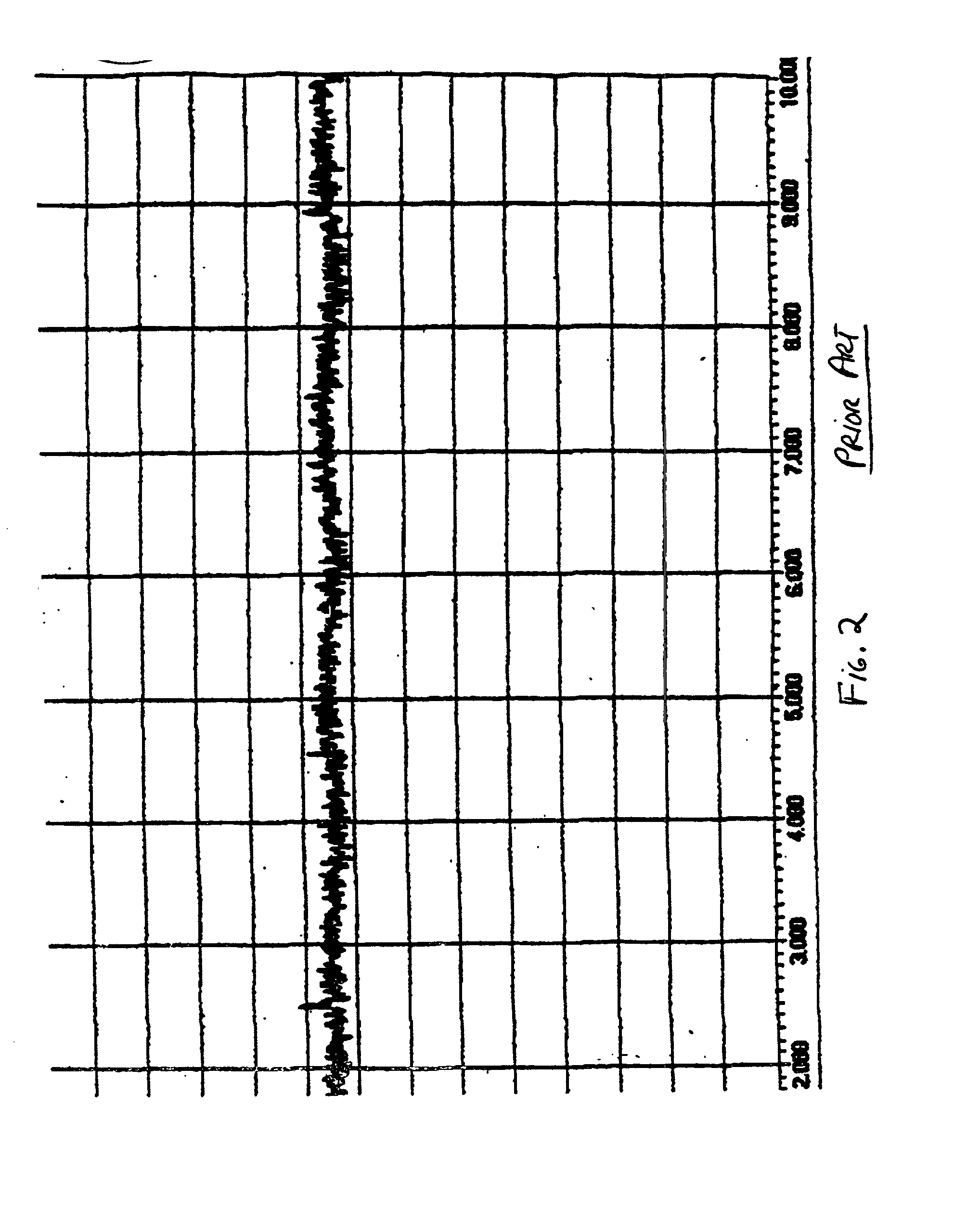Method and apparatus for injecting sighs during the administration of continuous positive airway pressure therapy
- Summary
- Abstract
- Description
- Claims
- Application Information
AI Technical Summary
Benefits of technology
Problems solved by technology
Method used
Image
Examples
Embodiment Construction
[0036] A test of the invention was performed on a 1,003 gram newborn that was born eleven weeks prematurely and was three days old when placed on the system. The newborn had received NCPAP since birth, was given no surfactant and was down to an NCPAP pressure of 2.5 cm of water with an inspired oxygen concentration of 21% (equivalent to room air). The newborn's respiratory rate at the NCPAP pressure of 2.5 cm of water was 55 per minute and oxygen level by non-invasive saturation measurement was 98%. The newborn was placed on a sigh rate of 10 per minute, i.e., 10 sighs were injected into the NCPAP per minute. After one hour the respiratory rate slowed to 47 per minute while the oxygen level remained normal at 99%. This slowing of the newborn's spontaneous respiratory rate indicates that the injection of sighs provided additional off loading of the ventilatory work, thereby decreasing the ventilatory work that the newborn had to do on its own. The sigh rate was then changed to 20 per...
PUM
 Login to View More
Login to View More Abstract
Description
Claims
Application Information
 Login to View More
Login to View More - R&D
- Intellectual Property
- Life Sciences
- Materials
- Tech Scout
- Unparalleled Data Quality
- Higher Quality Content
- 60% Fewer Hallucinations
Browse by: Latest US Patents, China's latest patents, Technical Efficacy Thesaurus, Application Domain, Technology Topic, Popular Technical Reports.
© 2025 PatSnap. All rights reserved.Legal|Privacy policy|Modern Slavery Act Transparency Statement|Sitemap|About US| Contact US: help@patsnap.com



